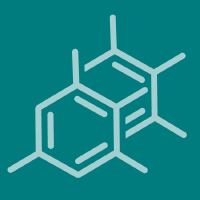Topic Menu
► Topic MenuTopic Editors


Sustainable Technologies for Water Purification
Topic Information
Dear Colleagues,
A large amount of emerging environmental contaminants, such as antibiotics, organic dyes, pesticides, heavy metal ions, and so on, are emitted daily into water bodies due to industrialization, which leads to a worsening crisis for water environments. Water scarcity has resulted in severe challenges. A variety of emerging technologies concerning water purification and treatment, such as membrane filtration, adsorption, chemical oxidation, catalytic degradation, biotechnology, and so on, have been developed to decrease pollution efficiently. This Special Issue “Sustainable Technologies for Water Purification” discusses relevant sustainable technologies for water and wastewater treatment pertaining to a nanoscale approach, membrane-based technologies for water recovery and reuse, the energy and water nexus, degradation of organic pollutants, nascent technologies, bio and bio-inspired materials for water reclamation and integrated systems, and an overview of wastewater treatment plants.
Prof. Dr. Rakesh Govind
Prof. Dr. Barry T. Hart
Topic Editors
Keywords
- wastewater treatment
- water treatment
- environmental biotechnology
- water quality
- bioremediation
- membranes
- biodegradation
Participating Journals
| Journal Name | Impact Factor | CiteScore | Launched Year | First Decision (median) | APC | |
|---|---|---|---|---|---|---|

Molecules
|
4.6 | 8.6 | 1996 | 16.1 Days | CHF 2700 | Submit |

Pollutants
|
- | - | 2021 | 40 Days | CHF 1000 | Submit |

Separations
|
2.7 | 4.5 | 2014 | 16.3 Days | CHF 2600 | Submit |

Sustainability
|
3.3 | 7.7 | 2009 | 19.3 Days | CHF 2400 | Submit |

Water
|
3.0 | 6.0 | 2009 | 19.1 Days | CHF 2600 | Submit |

Preprints.org is a multidisciplinary platform offering a preprint service designed to facilitate the early sharing of your research. It supports and empowers your research journey from the very beginning.
MDPI Topics is collaborating with Preprints.org and has established a direct connection between MDPI journals and the platform. Authors are encouraged to take advantage of this opportunity by posting their preprints at Preprints.org prior to publication:
- Share your research immediately: disseminate your ideas prior to publication and establish priority for your work.
- Safeguard your intellectual contribution: Protect your ideas with a time-stamped preprint that serves as proof of your research timeline.
- Boost visibility and impact: Increase the reach and influence of your research by making it accessible to a global audience.
- Gain early feedback: Receive valuable input and insights from peers before submitting to a journal.
- Ensure broad indexing: Web of Science (Preprint Citation Index), Google Scholar, Crossref, SHARE, PrePubMed, Scilit and Europe PMC.

